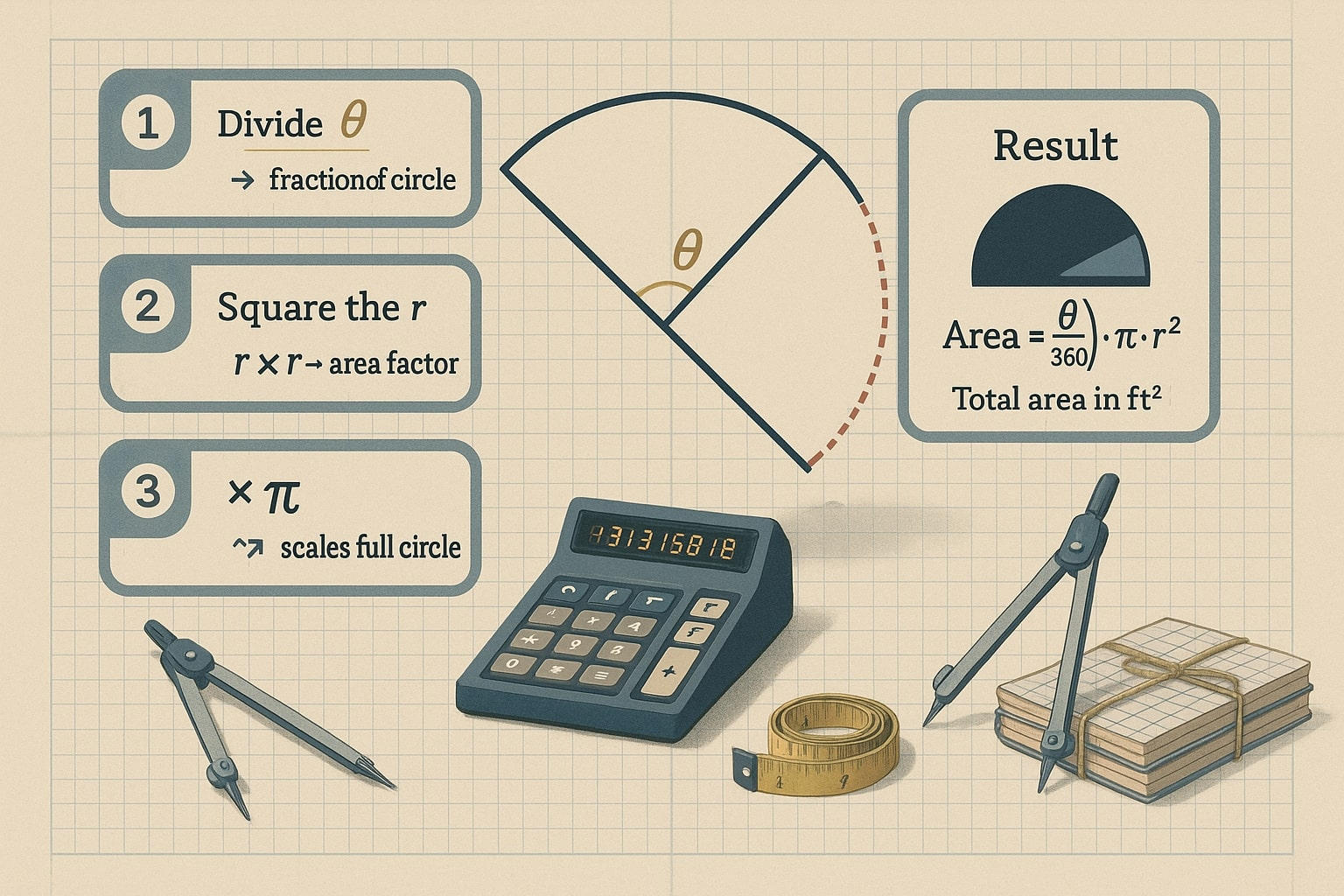From curved garden layouts to the design of amphitheaters, sector square footage is a key concept in planning circular spaces. This guide will help you grasp the basics of circular geometry, explore real-world uses, and even uncover a few fun facts—.
Want to learn more about other shapes? Try our full collection of Square Footage Calculators.
What Is Sector Square Footage?
A sector is a slice of a circle—like a piece of pizza, a section of a pie chart, or part of a round garden bed. It’s defined by two radii and the arc between them. When we talk about sector square footage, we’re referring to the area of that slice, usually measured in square feet.
Since a full circle contains 360 degrees, the size of a sector depends on both the radius of the circle and the angle of the slice. For example, a 90° sector would cover one-quarter of the total circle.
You’ll find this concept in many practical settings—laying out a circular fountain, mapping a radar's range, or calculating how much area a spotlight illuminates on a stage.
💡 Fun Fact: NASA uses sector area formulas when planning satellite signal coverage on Earth. Since many satellites transmit in circular or radial patterns, calculating sector areas helps engineers optimize satellite placement and avoid overlapping communication zones.

How to Calculate Sector Square Footage (with Example)
Figuring out the area of a sector is simpler than it sounds. You just need one straightforward formula:
Area of a sector = (θ / 360) × π × r²
Let’s break it down:
-
θ is the central angle of the sector (in degrees)
-
r is the radius of the circle (distance from the center to the edge)
-
π is a constant, approximately 3.1416
The formula works by calculating what fraction of the full circle you're working with—since a full circle has 360 degrees, dividing your angle by 360 gives you that portion.
Example: Let’s say you’re planting a circular flower bed with a radius of 6 feet, and you want to find the area of a 120° sector.
Step 1: Identify your values
-
Radius (r) = 6 ft
-
Angle (θ) = 120°
Step 2: Use the formulaArea = (120 / 360) × π × (6²)= (1/3) × π × 36= π × 12≈ 3.1416 × 12≈ 37.7 square feet
So, the sector takes up about 37.7 square feet of your garden.
For more complex shapes—like layouts combining sectors, rectangles, and other areas—you can use a Square Footage Calculator to break things down and get a more accurate total.

The Garden of Circles in Kyoto
Hidden behind the quiet walls of a lesser-known Zen temple in Kyoto, Japan, there’s a garden that stands apart from the rest—known to locals as “En no Niwa,” or the Garden of Circles. At first glance, it seems minimal: carefully arranged arcs of stone, moss, and gravel radiating outward like ripples on still water. But beneath this calm design lies a deep, centuries-old application of circular geometry.
The garden draws its inspiration from ensō, the Zen Buddhist symbol of a circle, which represents enlightenment, wholeness, and the cyclical flow of life. When the garden was reimagined in the late 1600s, temple records show that monks collaborated with skilled gardeners who used hand-drawn sector diagrams to map the arcs. They calculated how wide each curve should be to maintain a perfect sense of balance and visual harmony.
Of course, they didn’t use the term “sector square footage,” but the concept was the same. By measuring angles and radii, they made sure every section of moss or gravel covered exactly the right amount of space, creating a rhythmic, meditative flow, best viewed from a single point on the temple’s meditation platform.
Check out Math section to solve math quickly and easily


